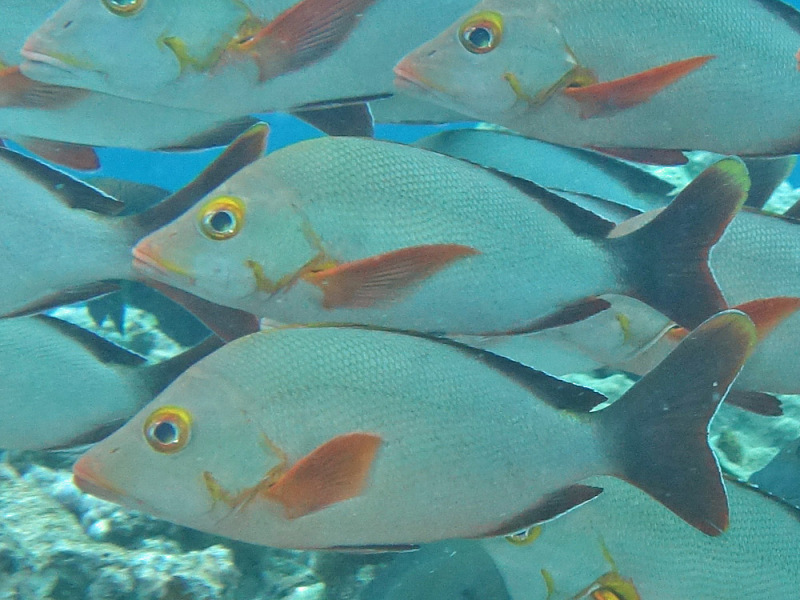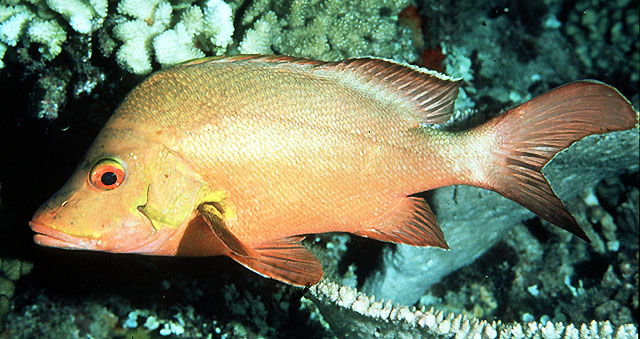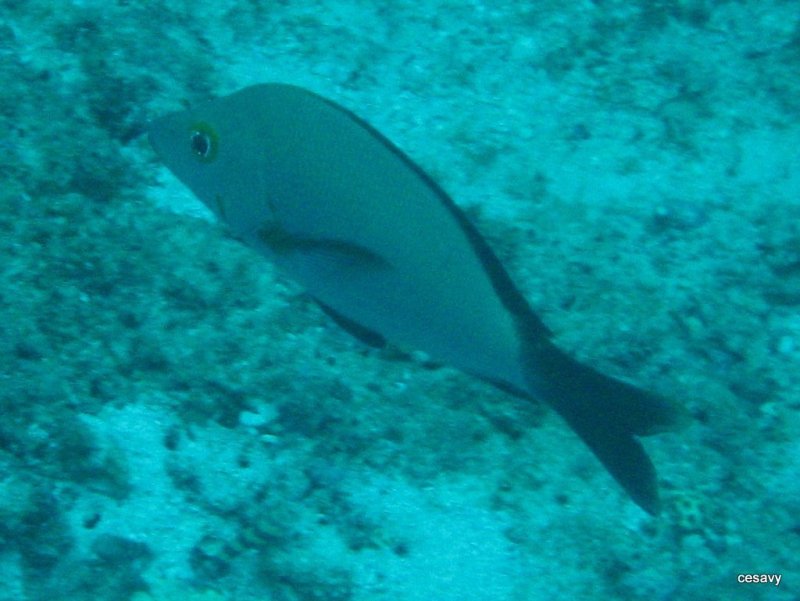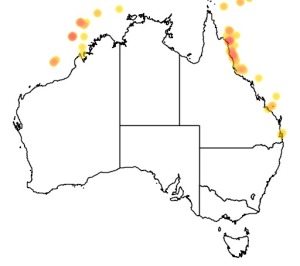�
�
�
���
Lutjanus gibbus
Humpback Snapper
Kingdom
Animalia
Phylum
Chordata
Class
Actinopterygii
Order
Perciformes
Family
Lutjanidae
Genus
Lutjanus
Species
Lutjanus gibbus
Colours
Distinguishing features
Distinguishing features still need to be specified.
Size
- Up to 50 cm (Total Length)
Depth range
- From 1 m to 150 m
Synonyms
Distribution
Distribution and habitat preferences
Indo-Pacific: Red Sea and East Africa to the Line and Society islands, north to southern Japan, south to Australia.
Adults mainly inhabit coral reefs, sometimes forming large aggregations, which are mostly stationary during the day. Juveniles occur in seagrass beds, also in mixed sand and coral habitats of shallow sheltered reefs. Sub-adults commonly form very large schools that are stationary or drift slowly along slopes during the day. Large individuals along coastal slopes at moderate depths. (Fishbase)
Diet
Feed on fishes, and a variety of invertebrates including shrimps, crabs, lobsters, stomatopods, cephalopods, echinoderms and ophiuroids. (Fishbase)
Web resources
Danger
- significant discomfort - There have been reports of ciguatera poisoning.
References
- Allen, G., R. Steene, P. Humann and N. Deloach (2003). Reef fish identification: Tropical Pacific New World Publications Inc., Jacksonville, FL, USA.
- Caley, M.J. (1991). Mechanisms of coexistence in communities of coral-reef fishes, Ph.D. thesis, University of Sydney. LIRS catalog number 307.
- Caley, M.J. (1995). Community dynamics of tropical reef fishes: local patterns between latitudes, Marine Ecology Progress Series, 129: 7-18. LIRS catalog number 447.
- View all references



